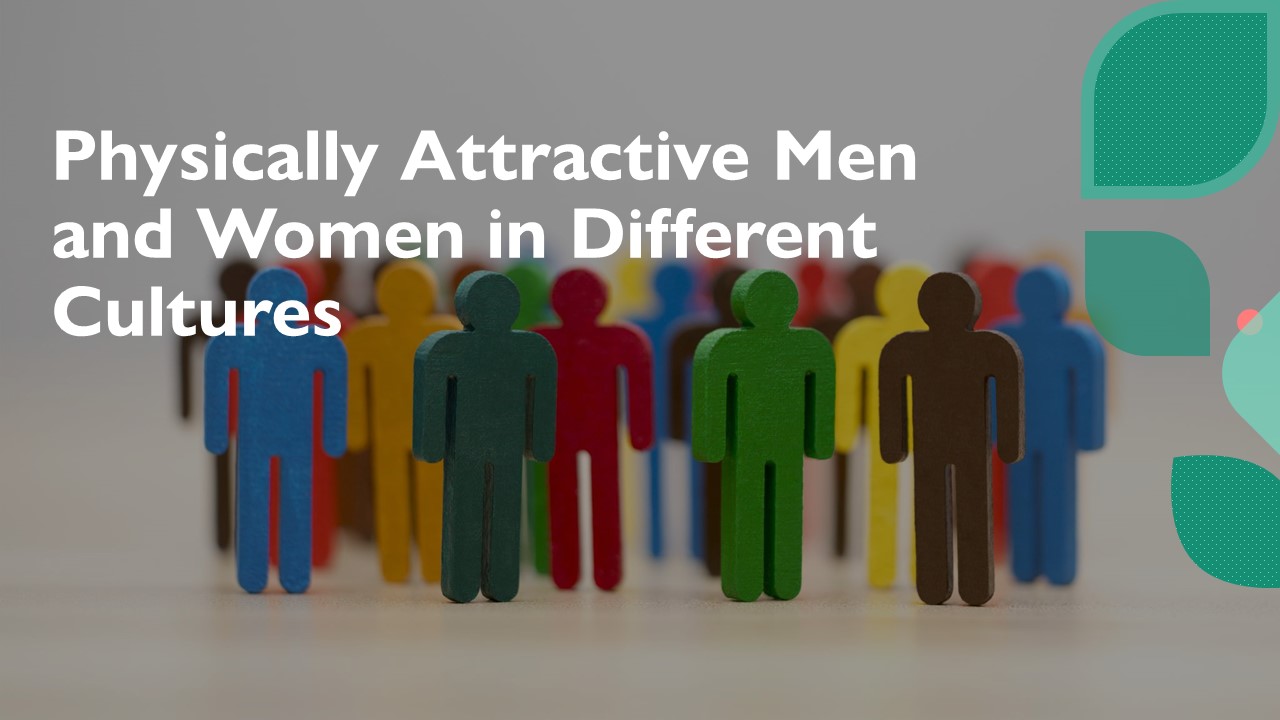Many men and women expect to get into mating or sexual relationships with partners who are “physically attractive,” “looking good enough,” or at least “not bad looking.” Many cultures recognize the cultural significance of women’s feminine beauty to men. Nevertheless, the masculine beauty of men is also important for women (Karandashev, 2022).
How Important Is It to Be Physically Attractive in Various Cultures?
Most scientific studies of physical attractiveness have taken place in Western and industrialized Asian countries. People in mainstream North American and European societies, as well as those in Australia and New Zealand, highly value physical attractiveness for relationships between men and women. Cultural norms in these societies have particularly high expectations of female attractiveness.
However, far fewer studies have been conducted in other societies around the world. According to scientific studies from other countries and remote tribal societies, the importance of beauty is not universal, and beauty standards differ across cultures. People in different Asian and African societies, such as Korea in Southeast Asia and Ghana in Africa, place less emphasis on attractive physical appearance. According to cultural anthropology, people in tribal subsistence-based societies also pay less attention to the physical appearance of their mates (Anderson et al., 2008; Wheeler & Kim, 1997; see, for review, Karandashev, 2017; 2022).
Is the Stereotype “What Is Beautiful Is Good” True in Different Cultures?
In many societies, people have the widespread, persistent, and powerful stereotype that “what is beautiful is good” (Dion, Berscheid, & Walster, 1972; Hatfield & Rapson, 2000; Lemay, et al., 2010; Lorenzo, et al., 2010).
Many women and men believe that a partner’s attractive physical appearance reflects other positive characteristics such as kindness, a pleasing disposition, emotional stability, dependable character, maturity, and intelligence (Fugère, Madden, & Cousins, 2019; Yela & Sangrador, 2001).
Yet, according to other studies, this “what is beautiful is good” stereotype is less strong and less general than previous research has concluded (Eagly, Makhijani, et al., 1991).
Besides, this stereotype is culturally specific. Many cultures have such physical attractiveness stereotypes as “what is beautiful is good.” However, this stereotype can vary in its content depending on cultural values, for example, in collectivistic and individualistic societies. It appears that “what is beautiful is culturally good” (see, for review, Anderson, 2019; Anderson, Adams, & Plaut, 2008; Swami & Furnham, 2008; Wheeler & Kim, 1997).
What Is Physically Attractive in Women and in Men?
Researchers have looked into what makes other people’s appearances and bodies physically and sexually appealing. Since the end of the 19th and beginning of the 20th centuries, studies of of what is “physically attractive” have been extensive (for example, Finck, 1887; Courtenay, 1922).
Many authors have published thousands of articles, books, and other publications about what is “physically attractive” in women and men. Many scientists have studied what is beautiful in the physical appearance of faces and bodies, as well as what makes them sexually attractive. This research has been especially prolific in recent decades.
How Similar and Different Is the Perception of Physical Attractiveness in Various Cultures?
Researchers found symmetrical features, certain body proportions, a low ratio of hips to waist, full lips, white teeth, lustrous hair, smooth and clear skin, and an absence of sores as attractive for many people across a variety of countries (e.g., Langlois et al. 2000; Sugiyama, 2005).
Studies have revealed that White, Black, Hispanic, and Asian men and women perceive attractive facial qualities cross-culturally relatively consistently when they evaluate White men and women (see, for review, Cunningham et al., 1995). For example, people judge women’s faces as attractive when they have
“high eyebrows, widely spaced large eyes with dilated pupils, high cheekbones, a small nose, a narrow face with thin cheeks, a large smile, a full lower lip, a small chin, and a fuller hairstyle.”
(Cunningham et al., 1995, p. 275).
These similarities are surprising because people have different racial and ethnic typologies of facial and body traits. So, these findings appear to indicate that men and women across these different cultures perceive the same features of facial and body beauty as similarly attractive. It’s hard to believe that, despite their obvious disparities in appearance, Hispanics, Asians, Blacks, and Whites have the same standards of physical attractiveness.
Are Standards of Physical Attractiveness Cross-Culturally the Same?
Thus, it appears that across many societies, men and women within a culture and between cultures generally agree on who is beautiful and handsome and who is not. Nevertheless, according to other cultural studies, it is apparent that different attributes of physical appearance may look more attractive in some cultures but not others. Researchers have found that different facial and body features are more or less attractive to people in different cultures (Cunningham et al., 1995; Fallon, 1990; Langlois et al., 2000).
For example, big smiles, raised eyebrows, and neonate qualities look attractive across cultures, depending on the local ecology and fashion prevalent in those societies. The expressive qualities of a person and the appearance of sexual maturity vary moderately in their attractiveness in different cultures. The attractiveness of different body weights, hairstyles, and other grooming qualities varies greatly across various societies.
